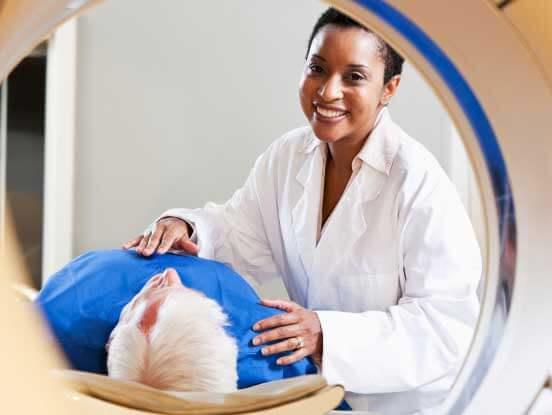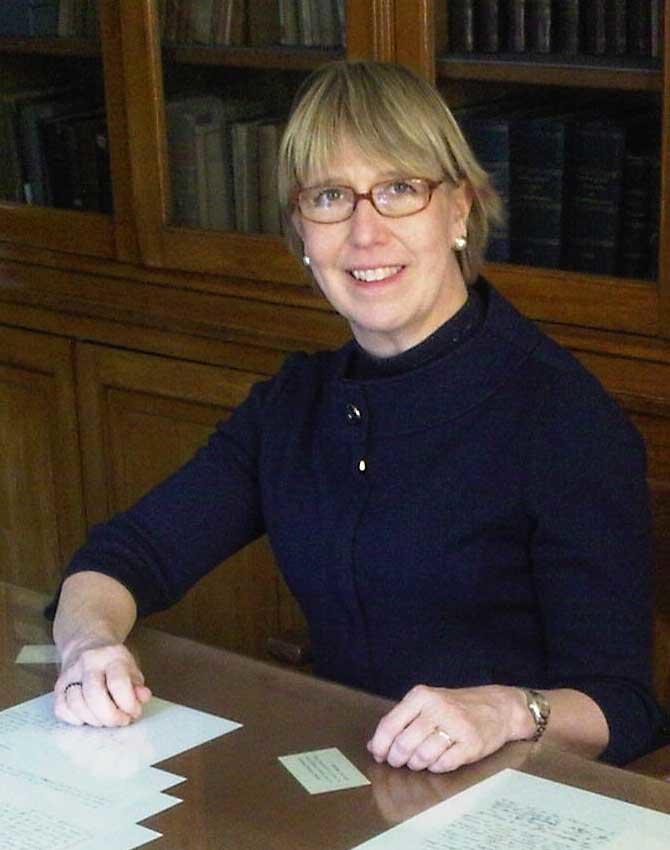Key Points
- Lung cancer is the leading cause of death from cancer and will kill more than 160,000 Americans this year.
- Lung cancer is a formidable disease. Once detected, it has often already spread to other parts of the body, making it impossible to cure advanced lung cancer by surgery alone.
- The National Lung Screening Trial (NLST), an eight-year National Cancer Institute (NCI)-funded study, proved that new technology could detect small, aggressive tumors early enough to remove them by surgery.
- This approach reduced deaths from lung cancer among participants by 20 percent and helped some patients become cancer-free.
Pathway to Discovery
Lung cancer is a formidable disease. By the time clinical signs of lung cancer are evident, the cancer has often spread to other parts of the body. For this reason, the overall five-year survival rate from lung cancer remains at less than 17 percent. This means that fewer than one in five people diagnosed with lung cancer will be alive five years after their diagnosis or the start of treatment.
NCI invests $256 million in the fight against lung cancer. This reality spurred clinicians and researchers to find ways to improve screening for and diagnosing lung cancer. In 2002, NCI launched the landmark NLST, a $256 million randomized clinical trial to study whether a new type of computed tomography (CT) scan called helical CT might save lives by identifying early lung cancers. Helical CTs—which produce more detailed pictures of the body—are faster and more accurate than earlier technology.
The NLST enrolled more than 50,000 current or former heavy smokers aged 55 to 74 to undergo three annual screenings and follow-up exams with either chest x-rays or low-dose helical CT scans. Heavy smokers were defined as smokers with 30 pack years—meaning they smoked a pack a day for 30 years or smoked three packs a day for 10 years.
NLST shows that lung cancer screening helps save lives. Research shows that screening is a powerful weapon against other forms of cancer, such as cervical, colorectal , and breast cancers. One of the principle aims of the NLST was to learn whether earlier lung screening would lead to earlier interventions, which could lead to greater survival.
The results between low-dose helical CT scanning and x-ray scanning were quickly evident. The number of lung cancer deaths among study participants in the helical CT group was 20 percent below the number of deaths among participants in the x-ray group. The study findings were so positive and encouraging that the NLST was ended earlier than planned. Research is ongoing to further analyze the NLST data to see what other conclusions can be drawn.
Enhancing Cancer Care
About 94 million Americans are smokers. About 8.6 million fit the age group and share the smoking history of the NLST participants. Lung cancer is the leading cause of death from cancer and will kill an estimated 160,000 Americans this year. One of the next key research questions is whether the costs of large-scale lung screening—such as the cost of diagnosing false-positives results, including unnecessary invasive procedures, and the accompanying human pain, suffering, and anxiety—outweigh the benefits of saving potentially millions of lives.
NCI scientists and other NCI-funded researchers are now studying the cost-benefit tradeoffs. Inspired by the NLST, the NCI-supported Cancer Intervention and Surveillance Modeling Network (CISNET) is creating models that will help guide decisions about whether and how extensively to use low-dose CT lung screening in general medical practice.
CISNET is working to answer a number of questions, such as
- What is the ideal age to begin screening?
- How often should people at risk be screened?
- Should lighter smokers be screened?
The U.S. Preventive Services Task Force (USPSTF)—a panel of nongovernment experts that advises the Department of Health and Human Services—has reviewed the risk-benefit question concerning low-dose CT screening. USPSTF currently recommends annual screening using low-dose CT in adults ages 55 to 80 who (1) have a 30 pack-year smoking history and (2) currently smoke or have quit in the past 15 years. The recommendation also explains the potential harms of false-positive screening results.
Turning Discovery Into Health
NCI researchers and other scientists funded by NCI continue to analyze the NLST data and search for new clues about the biology of lung cancer. The low-dose helical CT scans of more than 53,000 current or former smokers show that about 40 percent of the study participants had nodules of widely differing sizes, shapes, locations, and appearances.What these differences mean is still largely unknown. Biospecimens collected as part of the NLST may also be useful for explaining biology, shaping future cancer treatments, and informing the development of blood tests.
Christine D. Berg, M.D., in the Department of Radiation Oncology and Molecular Radiation Sciences at Johns Hopkins Medicine and the co-principal investigator of the NLST, stated that “ongoing research is focusing on improving the profile of people at risk of lung cancer. This will help target those most at risk who are most likely to benefit from screening. Research is also looking into better evaluating abnormal CTs to reduce the burden of false-positive results.”
NCI researchers also are looking to develop new screening methods that will be even more effective than the low-dose helical CT scans used in the NLST. These methods might involve not only new imaging technologies, but also better blood tests, if cancer biomarkers such as proteins or DNA fragments in the blood can be discovered.
Research to Practice: NCI's Role
The NLST was a broad and impressive study. Harold Varmus, M.D., NCI Director, explained that “NCI marshaled the scientific and financial resources required for this expansive study, because only trials such as this allow us to say which methods of screening are effective, and how effective, in defined populations.”
NCI helped fund some of the technological improvements that made low-dose helical CT screening possible. NCI also sponsored earlier small trials that proved the feasibility and demonstrated the potential benefit of a large-scale, low-dose helical CT screening trial. In addition, NCI selected 33 U.S. medical centers as study sites, administered the trial with the American College of Radiology Imaging Network, and fully funded the study at a cost of $256 million.
Key Takeaway
Lung cancer is the leading cause of death from cancer. By the time lung cancer is detected, it has often spread to other parts of the body. This makes removing the tumors by surgery impossible. The National Lung Screening Trial, funded by the National Cancer Insitute, proved that new technology could detect small tumors early enough to remove them by surgery.
Selected Resources
Kalender WA. X-ray computed tomography. Phys Med Biol. 2006;51(13):R29-R43. [PubMed Abstract]
Ma J, Ward EM, Smith R, Jemal A. Annual number of lung cancer deaths potentially avertable by screening in the United States. Cancer. 2013;119(7):1381-1385. [PubMed Abstract]
Moolgavkar SH, Holford TR, Levy DT, et al. Impact of reduced tobacco smoking on lung cancer mortality in the United States during 1975–2000. JNCI. 2012;104(7):541-548. [PubMed Central]
National Lung Screening Trial Research Team, Aberle DR, Adams AM, Berg CD, et al. Reduced lung-cancer mortality with low-dose computed tomographic screening. N Eng J Med. 2011;365(5):395-409. [PubMed Abstract]
National Lung Screening Trial Research Team, Aberle DR, Berg CD, Black WC, et al. The National Lung Screening Trial: overview and study design. Radiology. 2011;258(1):243-53. [PubMed Central]
Pinsky PF, Berg CD. Applying the National Lung Screening Trial eligibility criteria to the US population: what percent of the population and of incident lung cancers would be covered? J Med Screen. 2012;19(3):154-156. [PubMed Abstract]
U.S. Preventive Services Task Force. Screening for lung cancer. Rockville, MD: USPSTF. December 2013.
U.S. Preventive Services Task Force. Talking with your patients about screening for lung cancer. January 2014. Rockville, MD: USPSTF.

